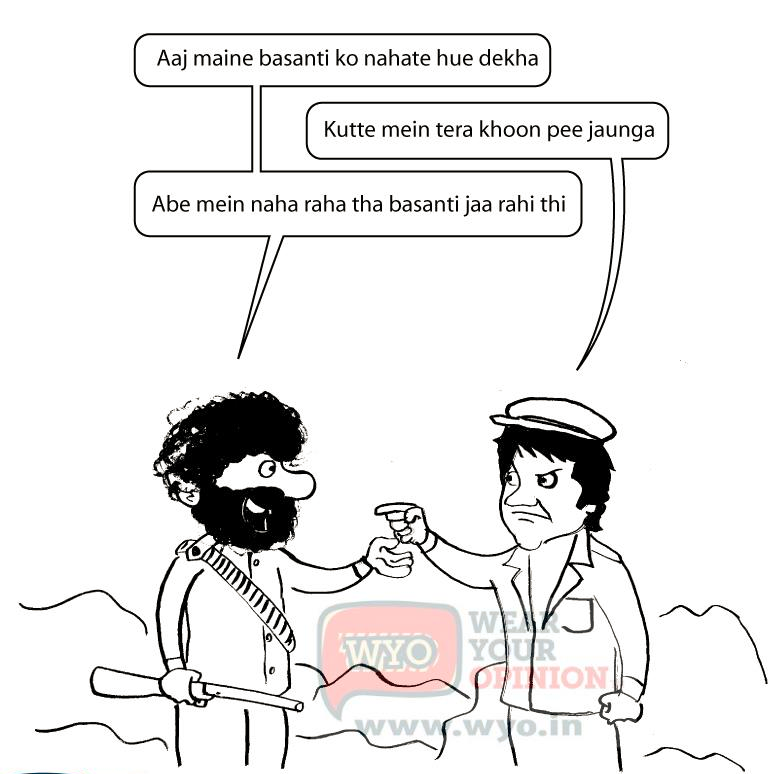This cartoon appeared today in my Facebook feed:

I’m posting it on Linguistrix because it’s a rather cute display of syntactic ambiguity, and for a change, it’s in Hindi. Syntactic ambiguity is when a particular sentence can be parsed in more than one grammatically correct ways, each with a different meaning. A popular example is I shot an elephant in my pajamas, which has not two but three parsings—either I was wearing my pyjamas, or the elephant was inside my pajamas, or that the elephant was wearing my pajamas. Note that most speakers, when confronted with that sentence, would tend to choose the most reasonable sounding meaning (that I was wearing pajamas), but that doesn’t mean that the other two readings are incorrect. In fact, the shock value introduced by the unnatural parsing is used for humor in the full version of the quote:
I shot an elephant in my pajamas.
…how he got in my pajamas, I’ll never know.
—Groucho Marx, Animal Crackers
In the cartoon, it’s the modifier nahaate huey that is the source of ambiguity. It could either confirm Veeru’s fears and modify Basanti, in which Gabbar’s in for a visual treat, or it could modify the verb dekha, in which case Veeru can be at peace.
Languages are so rife with ambiguities (including semantic) that it would be delusional to imagine that languages are supposed to be or intended to be unambiguous (first of all, no one intends a language, unless they are sitting down and designing one). Yet, people keep on flogging the dead horse, trying to claim that some constructions are ungrammatical just because they are ambiguous. It is a useful advice to writers that they avoid writing pointlessly ambiguous prose, but that prose does not become ungrammatical merely because it can have multiple meanings, and it’s useful to understand that distinction.
